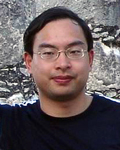2008
Fan Zhang
- Doctoral Candidate
- Brown University

Abstract
Focusing on material evidence in mortuary and ritual contexts, this dissetation discusses meanings and functions of theatrical representations in Jin and Yuan Pingyang to support new insights into interactions among art, ritual, and popular theatre in North China under foreign rule. Pingyang (modern, Linfen Shanxi) was a major theatre center where popular drama was commonly integrated into local religious ceremonies and rites during the twelfth and thirteenth centuries. It is also the only place in North China that has preserved such rich representations of theatre in sculptural, mural, and architectural programs of tombs and above ground buildings. The study of these representations in their original religious and cultural contexts shows that theatrical performances and their representations were not used merely as entertainment or decoration, but were in fact efficacious means for Jin and Yuan people, particularly those non-elite, to perceive and understand their world, to communicate with their ancestors and deities, and to maintain the continuity of their culture during the social upheavals under the Jurchens and Mongols.

